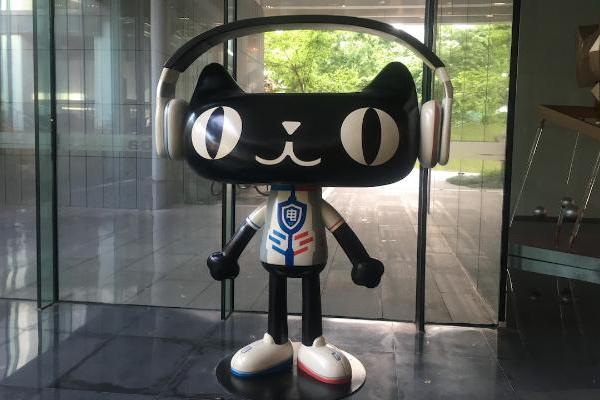to speedup training (with decreasing detection accuracy) set param stopbackward=1 for layer-136 in cfg-file each: model of object, side, illimination, scale, each 30 grad of the turn and inclination angles - these are different objects from an internal perspective of the neural network. So the more different objects you want to detect, the more complex network model should be used. to make the detected bounded boxes more accurate, you can add 3 parameters ignore_thresh = .9 iou_normalizer=0.5 iou_loss=giou to each [yolo] layer and train, it will increase mAP@0.9, but decrease mAP@0.5. Only if you are an expert in neural detection networks - recalculate anchors for your dataset for width and height from cfg-file: darknet.exe detector calc_anchors data/obj.data -num_of_clusters 9 -width 416 -height 416 then set the same 9 anchors in each of 3 [yolo]-layers in your cfg-file. But you should change indexes of anchors masks= for each [yolo]-layer, so for YOLOv4 the 1st-[yolo]-layer has anchors smaller than 30x30, 2nd smaller than 60x60, 3rd remaining, and vice versa for YOLOv3. Also you should change the filters=(classes + 5)*<number of mask> before each [yolo]-layer. If many of the calculated anchors do not fit under the appropriate layers - then just try using all the default anchors. - After training - for detection:
- Increase network-resolution by set in your .cfg-file (height=608 and width=608) or (height=832 and width=832) or (any value multiple of 32) - this increases the precision and makes it possible to detect small objects: linkit is not necessary to train the network again, just use .weights-file already trained for 416x416 resolutionbut to get even greater accuracy you should train with higher resolution 608x608 or 832x832, note: if error Out of memory occurs then in .cfg-file you should increase subdivisions=16, 32 or 64: link
How to mark bounded boxes of objects and create annotation files:Here you can find repository with GUI-software for marking bounded boxes of objects and generating annotation files for Yolo v2 - v4: https://github.com/AlexeyAB/Yolo_mark
With example of: train.txt, obj.names, obj.data, yolo-obj.cfg, air1-6.txt, bird1-4.txt for 2 classes of objects (air, bird) and train_obj.cmd with example how to train this image-set with Yolo v2 - v4
Different tools for marking objects in images:
- in C++: https://github.com/AlexeyAB/Yolo_mark
- in Python: https://github.com/tzutalin/labelImg
- in Python: https://github.com/Cartucho/OpenLabeling
- in C++: https://www.ccoderun.ca/darkmark/
- in JAVAScript: https://github.com/opencv/cvat
How to use Yolo as DLL and SO libraries
- on Linuxusing build.sh orbuild darknet using cmake orset LIBSO=1 in the Makefile and do make
- on Windowsusing build.ps1 orbuild darknet using cmake orcompile builddarknetyolo_cpp_dll.sln solution or builddarknetyolo_cpp_dll_no_gpu.sln solution
There are 2 APIs:
- C API: https://github.com/AlexeyAB/darknet/blob/master/include/darknet.hPython examples using the C API::https://github.com/AlexeyAB/darknet/blob/master/darknet.pyhttps://github.com/AlexeyAB/darknet/blob/master/darknet_video.py
- C++ API: https://github.com/AlexeyAB/darknet/blob/master/include/yolo_v2_class.hppC++ example that uses C++ API: https://github.com/AlexeyAB/darknet/blob/master/src/yolo_console_dll.cpp
жҺЁиҚҗйҳ…иҜ»
-
еҢ—дә¬йқ’е№ҙжҠҘ|140дёҮеј еҢ—дә¬ж¶Ҳиҙ№еҲё9жңҲ8ж—ҘеҸ‘ж”ҫ
-
еӨ©зҢ« еӨ©зҢ«618еҗҜ幕пјҢ1000дёҮ95еҗҺеңЁвҖң520е‘ҠзҷҪеӯЈвҖқвҖңжҠҘеӨҚжҖ§иЎЁзҷҪвҖқ
-
гҖҗйҮ‘зүӣеә§гҖ‘6жңҲ3еҸ·е–ңдәӢдёҚж–ӯпјҢзҰҸиҝҗеӨ©йҷҚпјҢиҝҗеҠҝйЎәйЈҺйЎәж°ҙпјҢй’ұиҙўдёҚж„Ғзҡ„3з”ҹиӮ–
-
йёЎеҶ иҠұжіЎж°ҙе–қжІ»д»Җд№Ҳз—…,ж Ҫз§ҚйёЎеҶ иҠұиҰҒжіЁж„Ҹд»Җд№Ҳ
-
68еІҒжҙӘйҮ‘е®қдёҺеҸӢдәәиҒҡйӨҗ 68еІҒжҙӘйҮ‘е®қдёҺеҸӢдәәиҒҡйӨҗ иә«дҪ“зӘҒ然жҡҙзҳҰ
-
дҝқе®ү|жј«еұ•вҖңдҝқе®үеҘівҖқйҒ“жӯүеҗҺпјҢзҪ‘еҸӢзҲҶеҮәе…¶з”ҹжҙ»з…§пјҢзңҹдәәжҜ”cosзӢӮдёүеҘҪзңӢеҫҲеӨҡ
-
科жҠҖдҝЎжҒҜдёӯеҝғ жҮӮжүӢжңәзҡ„дәәйғҪиҝҷж ·йҖүпјҢ20е№ҙиҙӯжңәйҒҝдёҚејҖзҡ„2еӨ§еҲҡйңҖ
-
ZAKERз”ҹжҙ»|并еҮәзҺ°зҫҺеӣҪйӣҮдҪЈе…өпјҢеҰӮдҪ•жқңз»қ99е№ҙжӮІеү§йҮҚжј”пјҹпјҢеЎһе°”з»ҙдәҡзҲҶеҸ‘йӘҡд№ұ
-
еҗҚзүҮи®ҫи®Ў еҚЎзүҮи®ҫи®Ў
-
жүҚеҸӢеҶӣдәӢв–ІеӨӘе№іжҙӢд»…еү©дёӢдёҖиүҳиҲӘжҜҚзј–йҳҹпјҢдё–з•Ңзӣ®е…үиҪ¬еҗ‘дёңж–№пјҢиҝҷж¬Ўе·ІдёҚжҳҜзҫҺеҶӣ
-
зәіиҘҝе§Ҷ|з”·еӯҗиҮӘз§°е…ҲзҹҘйҒӯжҺ§жёҺзҘһпјҢе·ҙеҹәж–ҜеқҰеҸ—е®ЎйҒӯеҪ“еәӯжһӘжқҖпјҢеҮ¶е«ҢпјҡжўҰдёӯдәәжҢҮдҪҝ
-
иғ«йӘЁзӯӢиҶңзӮҺжҖҺд№ҲеҠһпјҹ
-
еҰӮдҪ•иө·иҜүзҰ»е©ҡ(еҰӮдҪ•иө·иҜүзҰ»е©ҡпјҹ)
-
"Go City ж—…еҹҺ"ж—…иЎҢжҷҜзӮ№йҖҡзҘЁеҫ®дҝЎе°ҸзЁӢеәҸдёҠзәҝи§Јй”Ғж–°еҠ еқЎиҮӘз”ұиЎҢжҺҢдёҠж—…жёёж–°е§ҝеҠҝ
-
з”өеҠЁиҪҰжҺҢдёӯе®қз”өеҠЁиҪҰеҠІж•ҢеҮәзҺ°пјҹз”өеҠЁиҪҰе°Ҷдјҡиў«еҸ–д»ЈпјҹдҪ жҖҺд№ҲзңӢпјҹ
-
гҖҢзҪ‘ж–ҮеңҲгҖҚеҺҹеҲӣ и…ҫи®Ҝе«Ўзі»жҺҘз®Ўйҳ…ж–ҮпјҢзҪ‘ж–Үж–°ж—¶д»Је·Із»ҸеҲ°жқҘ
-
еҢ—жҷҡж–°и§Ҷи§үзҪ‘пјҡзҫҺеӣҪжӣҫжӢ’з»қдёӯеӣҪзү©иө„пјҢжҲ‘们йңҖиҰҒзғӯи„ёиҙҙеҶ·еұҒиӮЎеҗ—пјҹпјҢе…Ёзҗғз–«жғ…иӮҶиҷҗ
-
жғіз»ҷзҲ¶жҜҚеҒҡдёӘе…Ёиә«жЈҖжҹҘпјҢеңЁеҢ—дә¬е“ӘдёӘдҪ“жЈҖдёӯеҝғжҜ”иҫғеҘҪзӮ№
-
еҒҘиә«еҠұеҝ—еҪ•жүҚиғҪдә«еҸ—дәәз”ҹгҖӮеҸӘиҰҒз”Ёеҝғж„ҹеҸ—пјҢе№ёзҰҸе°ұдјҡж°ёиҝңеӯҳеңЁпјҢдәәжңүдёӘеҘҪзҡ„еҝғжҖҒ
-
жғ…жҡ–з«Ҙеҝғе…ізҲұз•ҷе®Ҳе„ҝз«Ҙзҡ„зҫҺзҜҮ?е…ізҲұз•ҷе®Ҳе„ҝз«ҘзҫҺзҜҮеҲҶдә«















